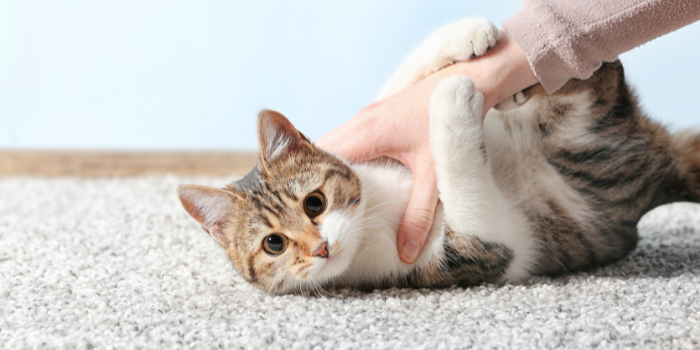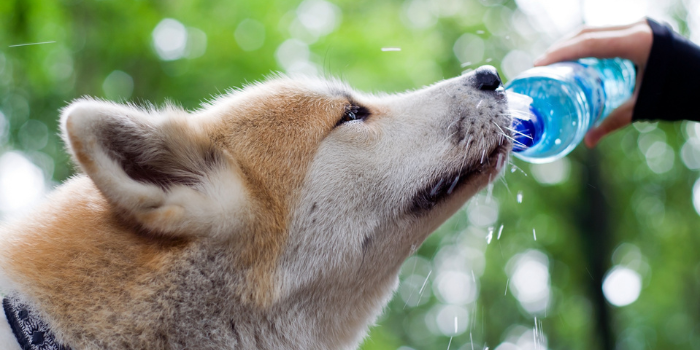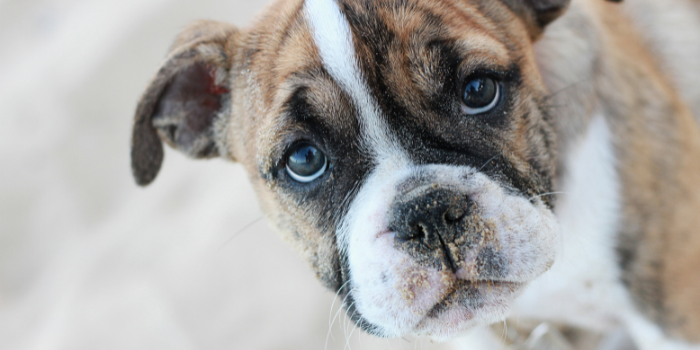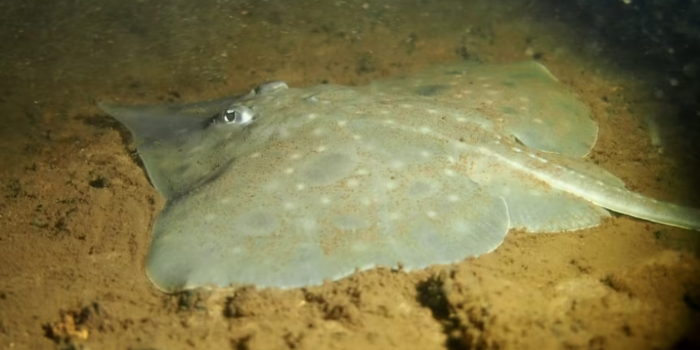| |
|
|
| |
Mira Mar Veterinary Hospital
|
|
| |
|
|
| |
|
|
| |
|
|
|
|

|
| |
Welcome to our June newsletter!
|
|
| |
|
|
| |
If you own a cat (or can borrow one), then on June 4 you can celebrate Hug Your Cat Day! There is something truly special about hugging a cat. So, if your cat likes a cuddle, we highly recommend that you get involved!
This month's newsletter edition is all about those conditions that can lurk inside your pet - such as kidney disease, diabetes, heart disease or Cushing's disease - that can be hard to see from the outside and can often take a bit of sleuthing and careful testing to diagnose. We hope you find it informative! |
|
|
|

|
| |
May Puppy Preschool
|
|
| |
|
|
| |
It was a case of "Who let the BIG dogs out?" at puppy school this month! This small but mighty class of large breed puppies all had an excellent time playing with each other and learning social skills.
Well done to Gracie, Millie, Odin, Oscar and Sadie!
If you think your puppy will enjoy our puppy preschool, then please give the clinic a call on 9841 5422. Our classes are filling fast!
|
|
| |
|
|
| |
CALL NOW
|
|
|
|

|
| |
4 things to know about kidney disease
|
|
| |
|
|
| |
Chronic kidney disease (CKD) is common in cats, affecting 30-40% of cats over ten years of age.
Here are four important facts to know about feline CKD.
1. Symptoms of early CKD may be mistakenly attributed to “normal aging”
Cats in the earlier stages of CKD usually show relatively subtle signs such as gradual weight loss and reduced coat quality. They may also be noted to be drinking and urinating larger amounts. Only once two-thirds of normal kidney function is lost will affected cats start to develop more obvious symptoms such as nausea, vomiting and bad breath.
Early CKD can be detected on blood and urine tests, which is why we recommend 6-12 monthly screening checks for cats ten years of age and older.
2. CKD can lead to dangerously high blood pressure
CKD is one of the most common causes of hypertension (high blood pressure) in cats. If left untreated, hypertension can damage the eyes and heart and hasten kidney function deterioration. It’s a good idea for cats with CKD to have their blood pressure checked at least every six months.
3. CKD can lead to urinary tract infections
Because cats with CKD have less concentrated urine, they are predisposed to urinary tract infections. We may therefore suggest routine urine tests in pets with CKD.
4. CKD can be managed with good medical care
With proper management, most cases of CKD will progress very slowly, allowing the pet and owner to enjoy several more years of good quality time together. Hooray!
Management usually involves:
- A therapeutic diet
- The maintenance of good hydration
- The supplementation of certain nutrients
- The management of any secondary hypertension or urinary tract infections
More advanced cases may also require treatment for nausea or anaemia.
If you would like to have your cat’s kidney function checked, please contact our kidney-careful veterinary team. |
|
|
|

|
| |
Could it be Cushing’s?
|
|
| |
|
|
| |
Have you heard of hyperadrenocorticism, commonly referred to as Cushing’s Disease**? This condition most commonly affects dogs and can impact their health and general quality of life.
Here’s what you should know about Cushing’s.
What is Cushing’s disease?
Cushing’s disease is a hormonal imbalance condition involving the excess production of cortisol (natural steroid) within the body.
Cushing’s disease can occur due to tumours of the adrenal glands (which produce cortisol) but is most commonly secondary to a pituitary gland tumour (which then results in excessive stimulating signals being sent to the adrenal glands). These tumours may be benign (unlikely to spread) or malignant (tending to spread aggressively).
What symptoms do pets with Cushing’s disease show?
Excessive levels of cortisol commonly cause symptoms such as:
- Increased hunger
- Increased drinking and urination
Many pets with Cushing’s will also develop:
- Skin and hair changes, such as thin skin and a poor-quality coat
- Lethargy
- Excessive panting
- A “pot-bellied” appearance
- Recurrent skin or urinary tract infections
How can Cushing’s disease be diagnosed?
Routine blood tests may pick up “red flags” for Cushing’s, such as high levels of a liver enzyme called ALP. However, we may already suspect Cushing’s if the pet is showing typical symptoms, as listed above.
A definite diagnosis of Cushing’s disease usually involves a combination of:
- An abnormal result on special blood tests that check your pet’s hormonal responses – these tests require your pet to have sequential blood samples taken over several hours
- An abdominal ultrasound so we can check the appearance of your pet’s adrenal glands and liver
Can Cushing’s disease be treated?
The treatment of Cushing’s depends on the type of disease the pet has. However, most cases can be managed with regular medication.
If you would like to find out more about Cushing’s disease or general organ health screening for your pet, consult our team – we’re passionate about proactive health care for pets!
**Bonus fact: Cushing’s Disease has led to one of our favourite medical misnomers, often being mistakenly referred to as “Cushion’s Disease”! |
|
|
|

|
| |
Keeping us on our toes about diabetes
|
|
| |
|
|
| |
Whilst you have likely heard of diabetes, you may not know that cats and dogs can be affected by it, too!
Therefore, our team has decided to lend you some sugar with the lowdown on diabetes in pets, focusing on the more common form known as diabetes mellitus.
What is diabetes mellitus?
Diabetes mellitus is caused by a deficiency of insulin. Insulin (a hormone normally produced by the pancreas) allows circulating glucose to be absorbed from the bloodstream into cells to be used as an important energy source for the body. Pets with a deficiency of insulin cannot absorb glucose into their cells, so it passes out in their urine without being utilised effectively.
What are the symptoms of diabetes mellitus in pets?
Pets with diabetes mellitus will commonly show symptoms such as:
- Increased thirst
- Increased urination
- Weight loss despite a good appetite
However, diabetes mellitus can also cause some more unexpected symptoms in affected pets, such as:
- Cataracts (severely clouded lenses within the eyes), particularly in dogs
- Nerve problems leading to hindlimb weakness and a flat-footed stance, particularly in cats
- An enlarged liver due to abnormal fat storage
- The development of an emergency and potentially life-threatening complication called diabetic ketoacidosis (DKA), where diabetic pets become severely dehydrated and unwell
Can diabetes be treated?
Most pets affected by diabetes mellitus will require long-term supplementation of insulin via twice daily injections under their skin. On the correct dosage of insulin, they will be able to utilise glucose normally, and their symptoms will improve or completely resolve.
With early, intense treatment and close monitoring, some pets (usually cats) may even recover enough to be able to start producing their own insulin again – this is known as “diabetic remission”.
If you notice changes in your pet’s eating or drinking levels or any unexpected weight loss, we’d advise a prompt veterinary check-up for further assessment. We’re sweet on high-quality veterinary care for all our patients! |
|
|
|

|
| |
Heart dogs - What is MMVD?
|
|
| |
|
|
| |
MMVD (myxomatous mitral valve disease) is one of the most common heart diseases in pets, particularly in smaller breed dogs. Whilst a diagnosis of MMVD in your pet can understandably be upsetting, our vets wanted to provide the good news about how we can manage this disease and maximise your pet’s quality of life.
What is MMVD?
MMVD involves the progressive degeneration of the mitral valve within the left side of the heart. This valve degeneration causes turbulence in the blood flow through that side of the heart, leading to gradual enlargement of the left atrium and ventricle (heart chambers).
What symptoms do animals with MMVD show?
As the left side of the heart becomes increasingly damaged and enlarged, affected animals can develop signs of heart failure. These signs can be due to:
- The back-up of blood within the nearby blood vessels of the lungs and liver, leading to fluid leakage into the chest and abdominal cavity
- This can cause symptoms such as coughing, breathlessness, reduced exercise ability, and tummy swelling
- The failure of the heart to effectively pump blood around the body
- This can cause symptoms such as fainting or paleness of the gums
Can MMVD be treated?
Whilst very early MMVD does not normally require treatment (as the heart can adjust to cope with milder disease), once the disease reaches a certain point, long-term medical treatment will improve the pet's quality of life and longevity.
Medical treatment usually involves the administration of heart support medications, diuretic medications to clear excess fluid from the body, and a reduced salt diet to help maintain healthy blood pressure.
In pets diagnosed with MMVD, our vets can assess their medication requirements through regular examination, blood pressure checks, blood tests and imaging of the lungs and heart (e.g. chest x-rays).
To chat more about monitoring your pet’s cardiac health, book an appointment with our knowledgeable vets. We heart good quality of life for all pets! |
|
|
|

|
| |
Bursting Bubblegum’s bubble
|
|
| |
|
|
| |
One weekday, whilst her owner Cate was getting ready for work, Bubblegum the seven-month-old Australian bulldog decided to explore the contents of Cate’s handbag.
Cate emerged from the bathroom to find Bubblegum lying amongst the remnants of a chewing gum bottle, happily snuffling and munching her way through scattered pieces of gum.
Crossly, Cate grabbed Bubblegum, pulled the gum out of her mouth, and shut her out of the bedroom so that she could tidy up the mess. However, her irritation turned to worry when she noticed that the gum packet listed xylitol as the sweetener. Cate remembered hearing somewhere that xylitol was toxic to dogs, so she immediately called her local veterinary clinic for further advice.
The veterinarian on duty confirmed Cate’s worries, advising that xylitol could cause dangerously low blood glucose levels (hypoglycaemia) in dogs and, at higher doses, potentially fatal liver damage. Cate was advised to bring Bubblegum down for immediate treatment.
When Cate and her pet arrived fifteen minutes later, Cate consented for Bubblegum to be immediately whisked away and induced to vomit. The pup was administered an injection of medication, which caused her to vomit several times, emptying her stomach. Within the vomited material, the nurses and vet noted a few small pieces of plastic and several partially chewed pieces of white gum.
Bubblegum stayed in the hospital for the rest of the day for general monitoring and checks of her blood glucose levels and liver parameters.
Luckily, Bubblegum remained of the opinion that the veterinary staff were her new best friends and was on the receiving end of high quantities of “therapeutic cuddles” throughout the day. Extra fortunately (thanks to the quick action of Cate and the veterinary staff), Bubblegum avoided any toxic effects from the xylitol, and was able to go home that night with another blood test planned in the next couple of days.
If, like Bubblegum, your pet bites off more than they can chew in the dangerous foods department, please contact our knowledgeable team immediately for further advice. |
|
|
|

|
| |
Animal News In Brief
|
|
| |
|
|
| |
World's priciest border collie starts new job on Queensland farm
Queen Lizzie, the world's most expensive border collie, was sold for $40,000 at the Rockhampton Dog Trial and Working Dog Sale. Liz's new owner, cattle producer James Parker, praises her exceptional working ability on their Queensland farm. "It's a lot of money for a dog, but they're part of everyday work," Parker said. Liz, who now helps muster cattle on the 4,500-hectare farm, is also adored by Parker's young children. "Macey's mad-keen on dogs," Parker noted. The Parkers see their dogs as long-term investments, essential to their farm operations.
Click here to read the full story at ABC News.
Two-thirds of Australians support banning pet cats from roaming
A national survey found that 66% of Australians support requiring pet owners to keep their cats contained, with only 8% opposed. Many councils already mandate cat containment, protecting wildlife and reducing public health risks. Cats allowed to roam kill millions of native animals annually and spread diseases, costing Australia over $6 billion yearly. Local councils and state governments are urged to adopt and enforce containment policies to protect wildlife and public health.
Click here to read the full story at The Conversation.
Utah cat's accidental postal journey to California in Amazon box
Galena, a six-year-old house cat from Utah, was accidentally mailed 864km to California after climbing into an Amazon return box. Owner Carrie Clark was devastated when Galena disappeared. "I cried my eyes out for seven days," she said. The cat was found at an Amazon warehouse and identified via microchip. "My kitty was OK," Clark said, relieved after the ordeal. Clark and her husband flew to California to retrieve Galena and are now advising others to microchip their pets and double-check boxes before returning them.
Click here to read the full story at ABC News. |
|
|
|

|
| |
Concerns over slow changes in salmon farming practices amid Maugean skate extinction threat
|
|
| |
|
|
| |
Two alarms were sounded last year about the extinction threat salmon farms pose to the endangered Maugean skate in Tasmania's west coast. Despite this, concerns persist that salmon farms have not changed their practices.
An IMAS report revealed a 47% decline in skate numbers from 2014 to 2021, mainly due to reduced dissolved oxygen levels. Commonwealth advice urged reduced salmon biomass by Christmas, but nitrogen output has increased.
EPA Tasmania director Wes Ford believes the 500-tonne nitrogen cap will help the harbour recover. Salmon Tasmania CEO Luke Martin said the industry is exploring ways to reduce nitrogen output.
While the EPA reports compliance near the farms, overall oxygen levels have dropped. Leonardo Guida from the Australian Marine Conservation Society urges caution about attributing improvements solely to oxygen pumping efforts.
Federal environment minister Tanya Plibersek is reviewing salmon farm licences amid environmental group requests. The Tasmanian government released a conservation plan for the Maugean skate, aiming to balance industry needs with protection.
Environmental groups argue that insufficient action has been taken. "One year on, absolutely nothing has been done to remove the threats to this animal," said Bob Brown Foundation's Alistair Allan.
Click here to read the ABC's full story.
Photo credit: Jane Rucker |
|
|
|
| |
This email contains comments of a general nature only and is not intended to be a substitute for professional veterinary advice. Please always consult your vet for specific advice on your pet's individual needs.
All content © PetPack 2024 |
|
|
|
[Footer]
|